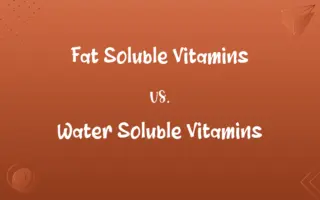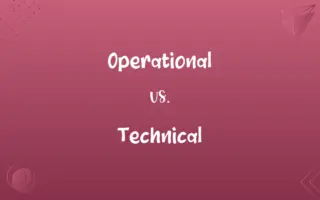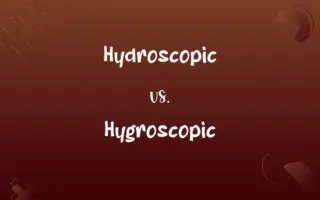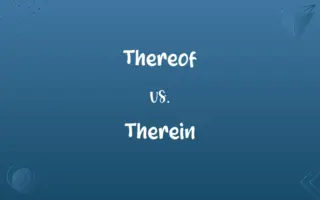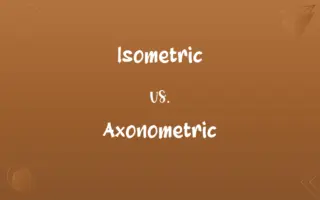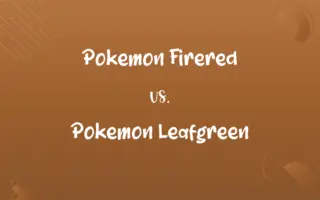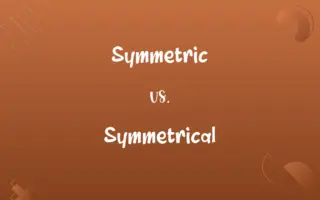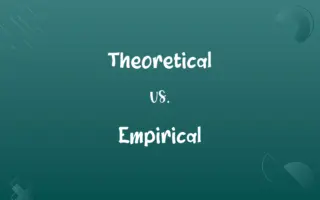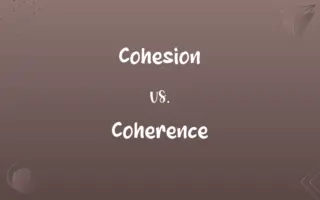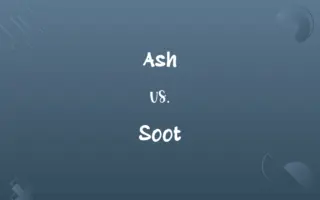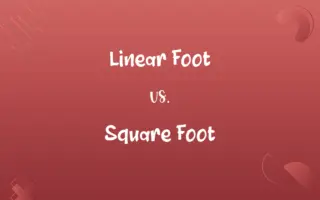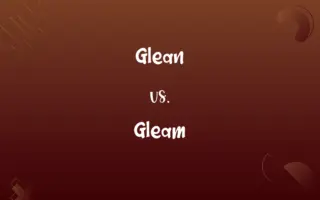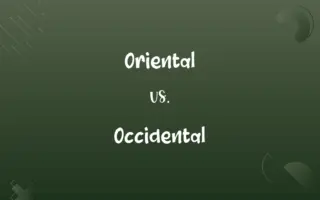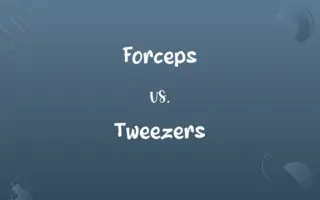Catalytic Cracking vs. Hydrocracking: Know the Difference

By Shumaila Saeed || Updated on December 25, 2023
Catalytic cracking breaks down heavy hydrocarbon molecules using catalysts, while hydrocracking uses hydrogen and catalysts for a similar process, producing cleaner products.
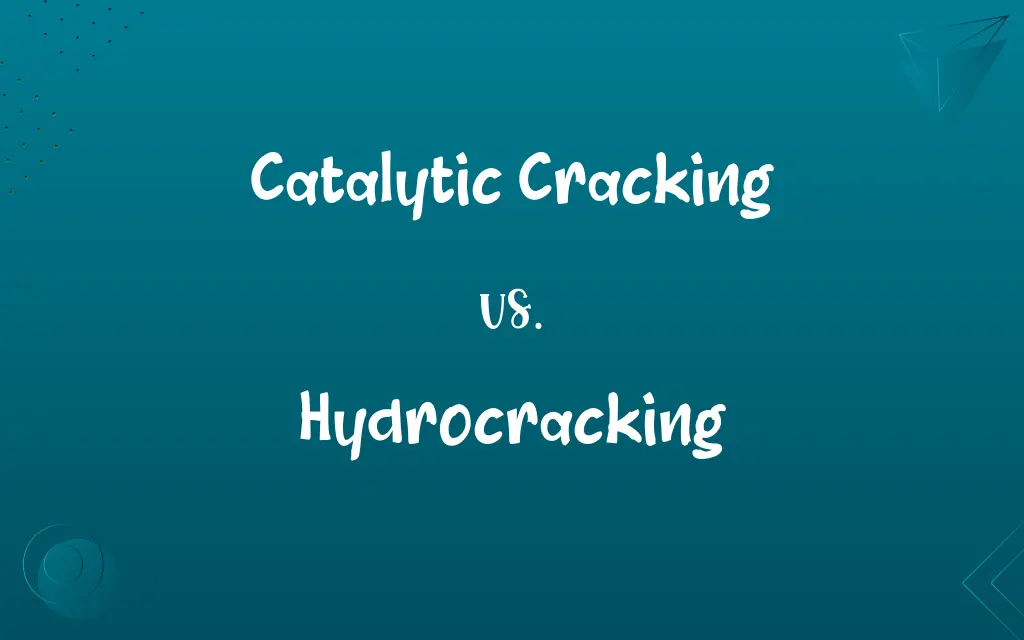
Key Differences
Catalytic cracking involves breaking down large hydrocarbon molecules into smaller ones using a catalyst, which accelerates the process without being consumed. Hydrocracking, a similar process, also breaks down hydrocarbons but in the presence of hydrogen and a catalyst, leading to more saturated, cleaner products.
Shumaila Saeed
Dec 09, 2023
In catalytic cracking, the primary goal is to produce gasoline and other lighter fractions from heavy oil. Hydrocracking not only produces lighter fractions but also aims to remove sulfur and nitrogen compounds, resulting in cleaner fuels.
Shumaila Saeed
Dec 09, 2023
The catalysts used in catalytic cracking often include zeolites, which promote the breaking of carbon-carbon bonds. In hydrocracking, the catalysts are typically dual-functioning, combining a cracking function with hydrogenation, which saturates the molecules.
Shumaila Saeed
Dec 09, 2023
Catalytic cracking is widely used in petroleum refineries to increase the yield of high-octane gasoline. Hydrocracking, while also used in refineries, is particularly beneficial for producing diesel and jet fuel, thanks to its ability to handle heavier feedstocks.
Shumaila Saeed
Dec 09, 2023
The environmental impact of catalytic cracking includes the production of more olefinic and aromatic compounds, which are less desirable in terms of emissions. Hydrocracking, however, produces fewer olefins and aromatics, aligning better with environmental regulations.
Shumaila Saeed
Dec 09, 2023
ADVERTISEMENT
Comparison Chart
Product Types
Gasoline, lighter fractions
Diesel, jet fuel, cleaner products
Shumaila Saeed
Dec 09, 2023
Environmental Impact
Higher olefins, aromatics
Lower olefins, cleaner emissions
Shumaila Saeed
Dec 09, 2023
ADVERTISEMENT
Catalytic Cracking and Hydrocracking Definitions
Catalytic Cracking
This process aims to produce high-octane gasoline and other valuable products.
Catalytic cracking significantly boosted the production of high-octane fuel.
Shumaila Saeed
Dec 01, 2023
Hydrocracking
Hydrocracking is effective in removing sulfur and nitrogen from fuel.
The refinery's hydrocracking process significantly reduced sulfur content in fuel.
Shumaila Saeed
Dec 01, 2023
Catalytic Cracking
Catalytic cracking involves breaking carbon-carbon bonds in hydrocarbons.
Through catalytic cracking, complex hydrocarbons were efficiently broken down.
Shumaila Saeed
Dec 01, 2023
Hydrocracking
Hydrocracking aligns with environmental goals by producing fewer olefins and aromatics.
The refinery's shift to hydrocracking was driven by environmental compliance.
Shumaila Saeed
Dec 01, 2023
Catalytic Cracking
Catalytic cracking is a process in petroleum refining to break down large hydrocarbons.
The refinery increased gasoline production through catalytic cracking.
Shumaila Saeed
Dec 01, 2023
ADVERTISEMENT
Hydrocracking
It involves breaking down heavy hydrocarbons into lighter, cleaner products.
The plant’s hydrocracking unit efficiently processed heavy oil residues.
Shumaila Saeed
Dec 01, 2023
Catalytic Cracking
It's a key process in modern petroleum refining to enhance fuel quality.
The refinery's catalytic cracking unit was upgraded to improve fuel quality.
Shumaila Saeed
Dec 01, 2023
Hydrocracking
This process produces saturated hydrocarbons, suitable for diesel and jet fuel.
Hydrocracking played a crucial role in meeting the demand for jet fuel.
Shumaila Saeed
Dec 01, 2023
Catalytic Cracking
It uses catalysts to facilitate the conversion of heavy oils into lighter fractions.
Catalytic cracking played a key role in optimizing the output of lighter oils.
Shumaila Saeed
Dec 01, 2023
Hydrocracking
Hydrocracking is a petroleum refining process that uses hydrogen and a catalyst.
Hydrocracking was employed to produce cleaner diesel fuel.
Shumaila Saeed
Dec 01, 2023
Hydrocracking
A process by which the hydrocarbon molecules of petroleum are broken into simpler molecules, as of gasoline or kerosene, by the addition of hydrogen under high pressure and in the presence of a catalyst.
Shumaila Saeed
Dec 01, 2023
Hydrocracking
(organic chemistry) the production of high-octane petroleum fuel and kerosene by hydrogenating large or complex hydrocarbons and then cracking them.
Shumaila Saeed
Dec 01, 2023
Hydrocracking
The process whereby hydrocarbon molecules of petroleum are broken down into kerosene and gasolene by the addition of hydrogen under high pressure in the presence of a catalyst
Shumaila Saeed
Dec 01, 2023
Repeatedly Asked Queries
What is catalytic cracking?
Catalytic cracking is a refining process that breaks down large hydrocarbon molecules into smaller, more valuable products using a catalyst.
Shumaila Saeed
Dec 09, 2023
What types of fuels are produced by hydrocracking?
Hydrocracking mainly produces diesel, jet fuel, and other cleaner fuels.
Shumaila Saeed
Dec 09, 2023
How does hydrocracking work?
Hydrocracking uses hydrogen and a catalyst to break down heavy hydrocarbons into cleaner, saturated products like diesel.
Shumaila Saeed
Dec 09, 2023
What are the main products of catalytic cracking?
Catalytic cracking primarily produces gasoline and lighter petroleum products.
Shumaila Saeed
Dec 09, 2023
Can catalytic cracking handle heavy feedstocks?
Catalytic cracking is less effective with very heavy feedstocks compared to hydrocracking.
Shumaila Saeed
Dec 09, 2023
Does catalytic cracking remove sulfur from fuel?
Catalytic cracking doesn’t focus on sulfur removal, unlike hydrocracking, which effectively reduces sulfur content.
Shumaila Saeed
Dec 09, 2023
Is hydrocracking better for the environment?
Hydrocracking is generally considered more environmentally friendly due to lower production of olefins and cleaner emissions.
Shumaila Saeed
Dec 09, 2023
Is hydrocracking used in all refineries?
While common, hydrocracking is not used in all refineries, as it depends on the refinery's product goals and feedstock.
Shumaila Saeed
Dec 09, 2023
Can hydrocracking produce gasoline?
Yes, hydrocracking can produce gasoline, though it's more focused on diesel and jet fuel.
Shumaila Saeed
Dec 09, 2023
Are the catalysts in hydrocracking different from those in catalytic cracking?
Yes, hydrocracking uses dual-function catalysts that facilitate cracking and hydrogenation.
Shumaila Saeed
Dec 09, 2023
What catalysts are used in catalytic cracking?
Zeolites are commonly used as catalysts in catalytic cracking.
Shumaila Saeed
Dec 09, 2023
Is hydrocracking more technologically advanced than catalytic cracking?
Hydrocracking is generally considered more advanced due to its dual functionality and the ability to produce cleaner products.
Shumaila Saeed
Dec 09, 2023
Are the products of catalytic cracking less environmentally friendly?
Products from catalytic cracking tend to have higher olefin and aromatic content, which can be less desirable from an environmental standpoint.
Shumaila Saeed
Dec 09, 2023
Why is catalytic cracking important in petroleum refining?
Catalytic cracking is crucial for maximizing gasoline production and improving fuel efficiency.
Shumaila Saeed
Dec 09, 2023
Are there any safety concerns with hydrocracking?
Hydrocracking requires careful handling due to high pressures and the use of hydrogen, which can be hazardous.
Shumaila Saeed
Dec 09, 2023
How does catalytic cracking impact fuel octane rating?
Catalytic cracking increases the octane rating of gasoline, improving its quality.
Shumaila Saeed
Dec 09, 2023
What types of hydrocarbons are targeted in catalytic cracking?
Catalytic cracking mainly targets larger, complex hydrocarbon molecules for conversion into lighter products.
Shumaila Saeed
Dec 09, 2023
What is the role of hydrogen in hydrocracking?
Hydrogen in hydrocracking helps in breaking down molecules and saturating the products, making them cleaner.
Shumaila Saeed
Dec 09, 2023
Does hydrocracking require higher pressures than catalytic cracking?
Yes, hydrocracking typically operates at higher pressures due to the involvement of hydrogen.
Shumaila Saeed
Dec 09, 2023
How does feedstock quality affect catalytic cracking?
Better quality feedstocks, with lower metal and sulfur content, improve the efficiency of catalytic cracking.
Shumaila Saeed
Dec 09, 2023
Share this page
Link for your blog / website
HTML
Link to share via messenger
About Author
Written by
Shumaila SaeedShumaila Saeed, an expert content creator with 6 years of experience, specializes in distilling complex topics into easily digestible comparisons, shining a light on the nuances that both inform and educate readers with clarity and accuracy.
